John Sebastian’s musical journey has taken him from Greenwich Village to The Lovin’ Spoonful to Woodstock to a notable solo career, with a lot of hit songs along the way including “Do You Believe in Magic”, “Daydream”, “Summer in the City”, and the theme song for “Welcome Back, Kotter”. A Rock and Roll Hall of Famer as the leader and primary songwriter for The Lovin’ Spoonful, Sebastian at 72 years young continues to write, record, and tour.
This interview was for Sebastian’s concert at SOhO in Santa Barbara on 10/12/16. It was done by phone on 10/4/16. (Photo from johnbsebastian.com)
Jeff Moehlis: What can people look forward to at your upcoming show?
John Sebastian: I do a one guy / one guitar approach to describing 50 years of songwriting, and generally end up getting to most of the songs from the Spoonful era. There was also sort of a middle era – I guess the solo period, the Warner Brothers time – that I’ll touch on. Also, some of the music that was the stimulus for some of these songs, which were anything from jug band to Holland, Dozier, and Holland.
JM: Have you ever performed in Santa Barbara before?
JS: Yes, I have, although [laughs] I’m afraid that on the spur of the moment I don’t have the venue. But I have, yeah.
JM: You’ve been doing this a while. Going way back, you were part of the Greenwich Village folk music scene. Do you have any favorite memories from that time?
JS: Well, every day was a favorite memory [laughs]. I’d have to say one of them was that I played with Tom Paxton one particular evening, as a harmonica player by the way – I couldn’t get arrested on guitar for many years [laughs], because there were really cool guys out there. I did this one recording, and that sort of started it going.
JM: In what way?
JS: In playing with Tom Paxton, Mississippi John Hurt overheard me, and then he started using me at the end of his shows. And that kind of gave me an entree into the Gaslight as a club. I could then go in and out of that club whenever I wanted to. What happened was I was able to listen to Mississippi John Hurt every night if I wanted, what amounted to about a two week stay usually. That was really pivotal. You know, boy, my memories of the Village are remarkably intact.
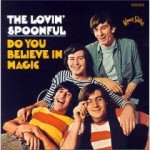
JM: The Lovin’ Spoonful grew out of that scene. What was the band’s vision when it first started?
JS: I think Zal [Yanovsky] said it best. At one point he said, “I want to sound like Elmore James and Buck Owens.” [laughs] Now, that wasn’t anything that we ever really achieved. But it was a lot of fun to point it that way. And we were kind of disappointed when it got termed folk rock, which we thought, “Gee, could you come up with a less ballsy name?”
JM: Your first hit was “Do You Believe In Magic” How did that song come together?
JS: You know, that’s sort of part of my show. But it really started off with tunes like “Heat Wave” and “Buzz, Buzz, Buzz”. There were a couple of tunes that were shuffles in a way that I guess I had never heard. I guess probably part of what I was listening to was the tradition of gospel music that I knew nothing about.
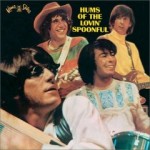
JM: Probably my favorite of the Spoonful songs is “Summer in the City”. What’s the story behind that song?
JS: It was a wonderful collaboration with my brother Mark, who actually has lived in California more than he’s lived in New York at this point. He had written a song, and when I heard the chorus I said, “Wow, that’s amazing! I want to go and sort of work on the front end.” It already was a good song – I just wanted to make it more tense, so that when that chorus hits it’s as open as its chords invited you to be.
Then Steve Boone contributed the middle – I guess you could call it like a middle eight section, that was pivotal because then we got all these ideas about putting traffic on it. I think we really were referring to “An American in Paris”, the Gershwin piece, because he uses the instruments of the orchestra to create that section that’s traffic – [sings] “Bang bang bang oo-ah ah ah / eh eh eh oo-ah ah”. There’s a section there – next time you listen to it you’ll see it.
Roy Halee, as the engineer, created this wonderful situation. When Zal in particular said “No, no! We want the backbeat even bigger. No, much bigger! Not even close!”, Roy took a microphone and put it 8 floors up in a metal stairwell, pushed a Voice of God speaker in the bottom of the thing – actually it was Voice of the Theater, but we called it the Voice of God for short – and then recorded the snare drum, all the time wowing the capstan on the board, and essentially creating a sound that he would go on to use in “Bridge Over Troubled Water”, and in “The Boxer”.
JM: So, “Summer in the City” – were you thinking New York City?
JS: Very definitely.
JM: It could apply to many places, but I know you’re a New Yorker.
JS: Thank goodness!
JM: Why did you leave The Lovin’ Spoonful?
JS: We had a very nice run, and eventually Zal Yanovsky left the band. Jerry Yester came in, and I think we were intact for another year and a half or two years. And then at that point I could sense that, first of all, a lot of things were changing, and second of all, that my musical desires were starting to expand to a desire to play with some of the guys who I’d played with back when I was an accompanist, who had now gotten [laughs] fabulous reputations, and were either peripherally or centrally famous. Crosby, Stills & Nash being some of the guys who I’d been friends with even before The Spoonful.
Also, I’d been talking to Paul Rothchild throughout my career. My actual producer had been Eric Jacobsen, who is a genius in his own right. My conversations with Rothchild included the idea of making an album where the songs determined the players. So this idea of an intact 4-piece band, that really had been so important to us. We eschewed all kinds of easier tactics such as have the Wrecking Crew do your tracks, and so on. The Spoonful are on their own songs, so that had been an important feature for us as a band. So this change, of saying “Well, no, what if that wasn’t the rule”, was really interesting to me.
Also, the hard cold fact that Zal Yanovsky and I had kind of been an original partnership, that I’d felt like that was to a large degree where the fire was in that band. Now, with him gone – like I say, I didn’t jump right out of there, I was in there for a while. I made an album called Everything Playing. Then it was time to move on.
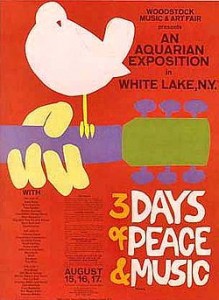
JM: I want to ask you about one of your big gigs as a solo artist – Woodstock. I understand that you weren’t on the program.
JS: Yes, that is correct. Not to belabor the point, because the story has been told 80,000 times. But yes, I wasn’t prepared. I went as a member of the audience, and when the rains came, I remember Michael [Lang?], who was on the stage at the time, said, “You know, we’ve gotta find somebody with an acoustic guitar, who could hold them until we sweep off the water. We can have an acoustic guitar.” And I didn’t realize until I looked around that he was talking directly at me. So I had to go find a guitar. I said, “I didn’t bring anything. Maybe I’ve got a thumb pick – I don’t know.” He said, “Well, you’ve got a few minutes to turn one up.”
So I turned up a guitar from Timmy Hardin, who I had recorded with during days when I was an unknown. I was mainly a harmonica player with him. That was one of my first encounters with [producer] Eric Jacobsen, and very close in there my first encounter with Paul Rothchild, because of recording with Fred Neil, a marvelous and very influential songwriter in Greenwich Village during that era, who wrote “Everybody’s Talking” which was such a hit for [Harry] Nilsson, and also things like a tune called “The Dolphins”. Pretty cool.
JM: Besides performing, what stood out to you about Woodstock?
JS: Many of the performers, myself included, did not particularly consider it their greatest work [laughs]. There I was with a borrowed guitar. I was already muddy. I remember Crosby, Stills & Nash complaining, “Oh my God, we’re playing acoustic instruments here.” Alternately raining and not raining, so things were going out of tune like crazy. It preceded tuners, or anything like that [laughs] to be able to rescue that aspect of things.
Not to undercut the fact that there were some remarkable performances by Sly [and the Family Stone], and by Creedence Clearwater [Revival] that nobody’s really aware of. They were fantastic. But as a whole, Woodstock was about the audience. The audience was the star of that show.
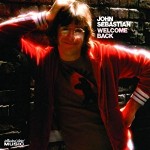
JM: I used to watch “Welcome Back, Kotter”, and of course you did the theme song for that. How did you get that gig?
JS: Well, it was a very standard way where a producer calls my manager. It was like two guys from Brooklyn calling each other, going “So, I’m looking for kind of like a New York guy to do a theme song. You know, it’s gotta be kind of like a John Sebastian kind of guy, or Dion DiMucci, or somebody.” And my manager says, “Well, that’s funny. Two weeks ago I really began graduating from his agent to his manager.” So I was in an office with the producer of the show, who was a very likable guy, who described the show at great length. I came up with that song very quickly. They liked it so much they changed the name of the show from “Kotter” to “Welcome Back, Kotter”.
JM: You’ve played with so many amazing people over the years. One that stands out to me is that you part of Bob Dylan’s sessions for Bringing It All Back Home.
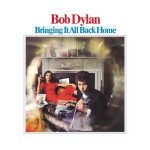
JS: Yeah, and the atmosphere was very casual. It wasn’t like Bob came and said, “John, I want you to be a guitarist on a session” [laughs]. There was a kind of a social circle that Bob included in a lot of his sessions. For example, I dih’d not come with a Fender bass or anything, and to this day Steve Boone and myself and Harvey Brooks, when he’s around, go around this circle really just trying to figure out who did end up playing on some of those songs.
The sequence was Bob had asked me very informally, then there was a tune that he said, “Oh no, here, why don’t you just play bass,” and handed me an instrument. So I began to play bass, and then Steve Boone arrived, and I said, “Bob, you know, Steve is actually a bass player, so this would be good.” So Steve did several takes, to my recollection.
Then coincidentally Harvey Brooks showed up. Steve and I both deferred to him, because really we were still like pikers compared to Harvey. So we quickly said, “Hey, here’s Harvey. Like, he does sessions.” [laughs] So then Harvey did several takes. So to this day, I really don’t know. It wasn’t a situation where Bob gathers you around the table, and you think about it. Or, “Let’s go back and listen and see what we should keep,” or anything like that. It was a different era. And I’d have to say, Bob didn’t know how to record. It was unbelievably great, so it could penetrate anything, but I don’t feel like he really knew how to record in that era.
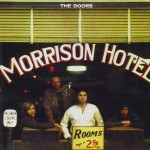
JM: I also want to ask you about “Roadhouse Blues” by The Doors. What was that experience like?
JS: Well, most folks of your era are amazed and interested in the aspect that it was The Doors. You’re going to have to excuse me for being from a band that was just a few years before those guys, so really when they came out we said, “You know, they’re kind of angular.” And when I’d talk to Paul Rothchild, he’d say, “The girls love this guy.” I’d say, “I get it. Sure, sure.”
But it wasn’t like a big musical event for me as much as it was an opportunity to play with the bass player Lonnie Mack. To me, that was what was going to be incredibly exciting. Years later, our whole relationship was based upon like, “That was so great to play together. Hey, all these young kids want to talk about that Doors session.” [laughs] So, you know, it’s just the passage of time and how good things will come to the surface.
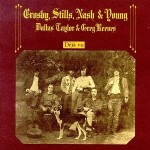
JM: You also recorded the song “Deja Vu” with Crosby, Stills, Nash & Young. One reads that those sessions were somewhat testy, and they weren’t getting along with each other. What was your experience like?
JS: No, no, no, no. I’m sorry. That’s people who weren’t there speculating things. “Oh boy, I bet they were mean.” [laughs] C’mon, that’s when they were doing some of their greatest stuff. It was a little adversarial – jeez, I mean you get David Crosby and Stephen [Stills] in a room… It’s great they had Graham [Nash] as this kind of middle guy who could very often be the diplomat. But as intense as that was, they were having a very good time, and they knew it. Mine was a bit of an afterthought, I think. On the tail end of one of those tunes, they asked me to put some harmonica on.
JM: I read that at one point you were approached to be part of Crosby, Stills & Nash, and you declined. Is that something that you have any regrets about?
JS: Certainly not. No, no, no, no. This was a time when my belief was that I’d been lucky enough to have most of my audience follow me from a band to a solo career. That wasn’t an automatic thing in those days. You know, communications didn’t move that fast. You couldn’t really make that transition seemlessly. So I managed it, probably through some of the wonderful accidents of things like Woodstock.
But I did not trust the idea that I could jump to a third project. Obviously if you did that, you’d really have to focus on it. But the idea really was a passing one. I have told the story… People really jump on it, and make it bigger than it was. Because, it was maybe a two afternoon conversation [laughs]. They were already rehearsing in my garage that I’d converted into a little rehearsal room, and so I’d very often just sort of thump along on a drum kit that was in the corner. But really, I think my big drum contribution to Crosby, Stills & Nash was to introduce them to Dallas Taylor.
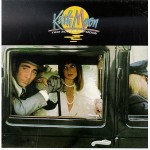
JM: It’s amazing how many people, including you, appeared on the album Two Sides of the Moon by Keith Moon.
JS: [laughs] Who didn’t want to get in on those sessions?
JM: Do you have any crazy stories that you’re willing to share from that?
JS: I can’t really tell you the sessions were too crazy, because by the time Keith got to trying to put that album together, it got down to the process of recording with a fairly big group. So there couldn’t be too much craziness. I mean, in fact, Keith would then overdub his vocals and such.
One of my dear friends named Ronnie Koss was the other guitarist on “Welcome Back”, and he was actually part of the sessions before I got in on them. But he kind of explained to me that Keith has had a few weeks to fuck around [laughs] and spend money, but now we’ve got to get down to it. They were kind of Wall of Sound-ish sessions, in that there were three guitarists, and maybe several keyboards, that approach to begin with rather than starting with a quartet and maybe overdubbing whatever was left.
JM: A lot of people say the album was a disaster, but it’s actually much better than people give it credit for.
JS: I have not listed to it probably since it came out.
JM: You might want to give it a listen. It sounds like everyone was having fun, and that’s have the battle.
JS: Good.
JM: What advice would you give to an aspiring musician?
JS: [laughs] Have you thought about plastics? [laughs] Really, I can’t be falsely encouraging with our current laws in place that allow our record companies and various conveyances of music to make private deals… I mean, I’m very glad that I’m up to it to be able to go and concertize, but if I wasn’t that would be too bad, because I’d have to go and concertize. That’s entirely because of the complete hacking away… I don’t know if I even get an eighth of what was really very normal to get for royalties.
JM: As a twist on the question to make it less from the business side, what advice would you give to an aspiring songwriter?
JS: Learn your instrument. I think that’s it. It’s the ten thousand hours. You’ve got to do it. The guys who don’t may get a huge hit record, and it’ll really piss you off. But in the long run, it’ll benefit you.
JM: Do you have anything in the works? Are you still writing and recording songs, or are you more focused on touring nowadays?
JS: Yes, I’m writing songs, only if it doesn’t hurt me. I’ve had a couple pop out here and there. I was just recording some things with a wonderful country singer named Tony Jackson, who along the way from recording a new version of “Nashville Cats” ended up recording two or three other things of mine. I write occasionally with other folks – Big Al Anderson and Phil Galdston are frequent collaborators. It looks like I have a new project coming up with Arlen Roth, who I enjoy and have for many years as a guitarist. Of course, the material that David Grisman and I recorded is more recent. So really that’s the central thing.
About every two years somebody wants to do some kind of a biopic movie of the Spoonful [laughs]. I have to explain that there’s like a curse [laughs]. So those kind of things also keep me busy. That’s more of a distant gold ring. I’ll still reach for it occasionally when presented to me.

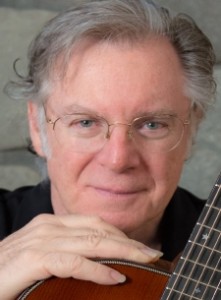
Discussion
No comments for “Interview: John Sebastian”